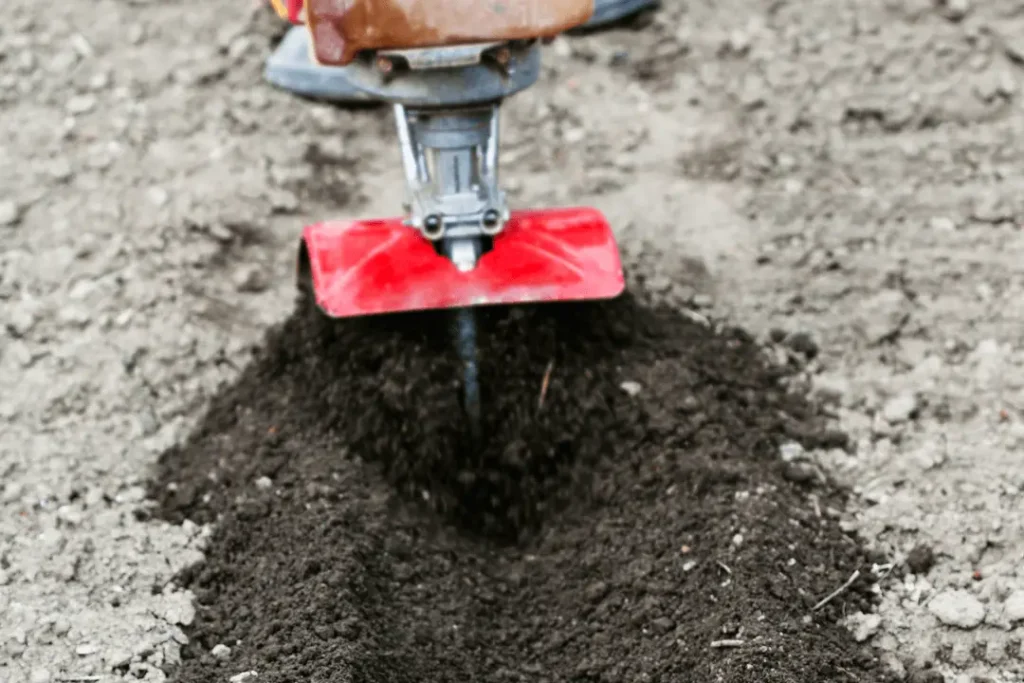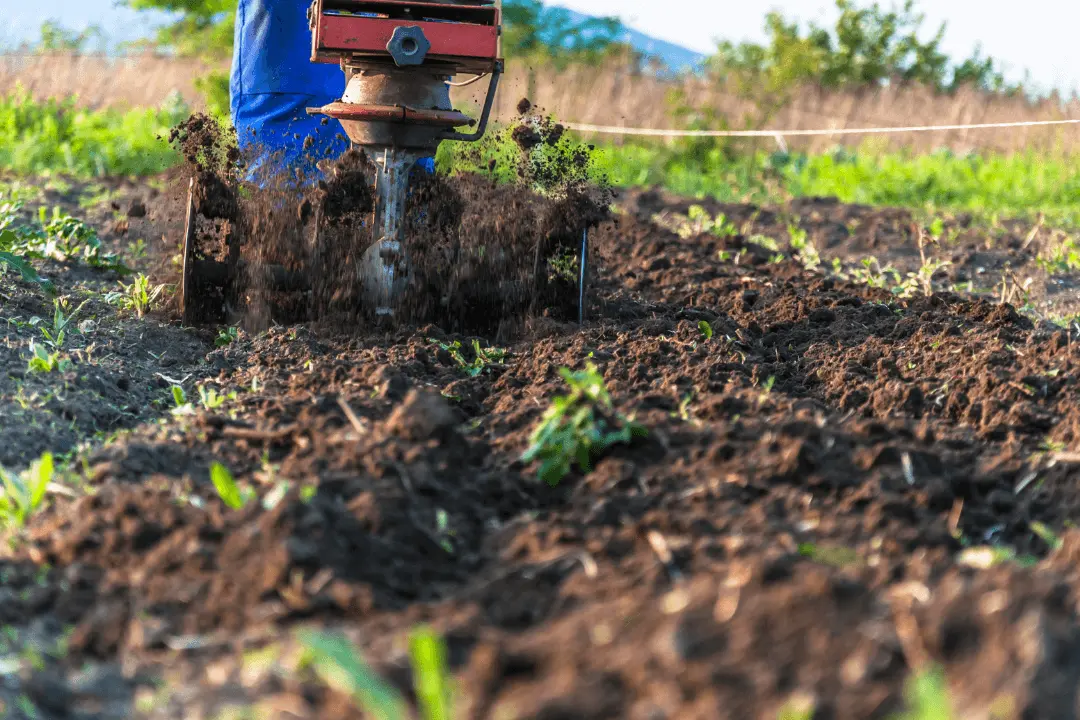The Difference Between Cultivator and Tiller: Choosing The Right Tool for Your Gardening Requirements
Every gardener wants growing plants and healthy soil. However, achieving this goal often involves digging up or cultivating soil, and with the many tools options to choose from it can be difficult to determine which is the best one for your needs.
Fear not, fellow plant enthusiasts! This blog will explain the main distinctions between cultivator and tiller and help you select the right tool for your garden’s needs. visit for more related posts on smarttoolbuddy.com
The Mighty Tiller: Breaking New Ground
Imagine the power of a machine that pushes through the tough soil and leaves a perfectly tilled bed behind. That’s the beauty from a tiller. Let’s find out what makes them stand out:
- The power of Tillers tends to be gas-powered machines that have powerful motors and rotatable tines. They can disperse even the hardest compacted soils, which makes them suitable for:
- Making new garden beds: If you’re starting an entire garden on an unloved piece of soil, a tiller may be lifesaver. It will tackle the toughest ground and transforms it into a seedbed that can be used.
- Garden areas that are large: In large gardens, using a tiller could drastically reduce the amount of duration and time required to prepare the soil.
- Tine options: Tillers come with various tine designs. Some come with front-tine tillers which provide better maneuverability in small areas and rear-tine tillers offer more power to larger areas.
The Humble Cultivator: A Gentle Touch for Existing Soil

Cultivators on the other they are designed to provide an easier feel. They are different from tillers
- Dimensions and power: Cultivators are smaller and lighter than tillers. They are typically hand-held or powered by electricity and are ideal for:
- Garden beds that are established: If you already have a garden area and you want to loosen up the soil to plant or for controlling weeds using a cultivator, it is a great option. It breaks down the top a few inches of soil, without affecting the deeper layers.
- Seedbed refinement After tilling the seedbed with an even larger machine, a cultivator may be employed to refine the seedbed to create an even and smooth area for planting seeds.
- Beds raised: Because of their small dimensions and more gentle action, cultivators are ideal to work in raised gardens.
- Attachments and tines: Cultivators typically have smaller and less abrasive tines than tillers. Certain cultivators have an interchangeable attachment for certain tasks such as weeding or hilling potatoes.
Choosing Your Champion: Cultivator vs. Tiller
Here’s a short step-by-step guide that will help choose the best tool among cultivator and tiller for your garden:
- New Garden, Tough Soil: Choose a tiller to break up new ground, or to compact heavily areas.
- established beds, light loosening Choose cultivators for tasks such as the control of weeds, seedbed preparation in beds already established or for maintenance of raised beds.
- Garden Dimensions: For large gardens it is possible to help you save time and energy. For smaller garden beds or raised beds, cultivators provide more control and flexibility.
Beyond the Basics: Pro Tips for Using Cultivator and Tiller

- Tilling Do not over-till, because it could cause disruption to soil structure and beneficial microorganisms.
- Growing: Work in sections to ensure better control. Avoid cultivating or tilling soil that is wet that could lead to compaction.
- Make sure your tool is sharp: Both tiller tines and cultivator tines require periodic sharpening to achieve optimal performance.
Be aware: The right tool is what will make gardening more effective and enjoyable. When you know the advantages of cultivators and tillers, it is possible to choose the best one to aid you in creating flourishing as well as healthy gardens!
Cultivator or. Tiller FAQs: Clearing up the confusion
When you think of garden preparation Two tools usually come to the forefront: tillers and cultivators. What are the main differences between the cultivator and tiller, and which is best for your needs? Here are some solutions to the most frequently asked questions to aid you in the maze of soil cultivation
Can cultivators be used to serve to till?
In essence, there is no. Although both are used to cultivate the soil, they serve distinct goals:
Cultivators They are designed to allow gentle loosening of soil. They usually have fewer tines, and are less efficient than tillers.
Tillers designed to break up hard and compacted soil. They are equipped with powerful motors and sharp tines that allow for deep penetration.
Utilizing a cultivator for a tiller isn’t going to be efficient. It may be unable to work with soil that is compacted and won’t be able to achieve the same amount of deep tilling.
Which is better? cultivator or tiller?
There’s no a single “better” option. It’s all about your individual requirements:
Select a tiller If you’re beginning an entirely new garden on a neglected area or you need to break up the compacted soil using a tiller, its power is an ideal choice. It will also help you make it easier for larger gardens to be maintained.
Choose a cultivator If you have established gardens and you’d like to loosen up the soil’s top layer to plant or control weeds using a gentler twitch, a cultivator is ideal. It’s also suitable to raised beds and seedbed refinement following tilling.
What is the difference between cultivator and Rotavator?
Rotavator is a different term used to describe tiller. Both utilize rotating tines to break down and till soil.
What’s the function that a cultivationist serves?
Cultivators serve severaLoosening soil They break down the top couple of inches of soil increasing the water’s infiltration and aeration.
1. Controlling weeds: cultivating weed roots disrupts them and brings them closer to the surface to make it easier to remove them.
2. The preparation of seedbeds: After tilling, cultivators can be employed to make the seedbed more pliable for planting seeds.
3. Mixing amendments The process of cultivating can help add compost, manure or other amendments to the topsoill purposes:
Also Read:
The Humble Hand Cultivator: Your Guide to Effortless Soil Prep and Weeding


Related Blogs
The Top 10 Best Litter Box for Multiple Cats
5 Best Dry Cat Food for Indoor Cats 2024
Affordable Bluetooth Projector for Gaming: The Best in 2024
The Best Soundbar for Music and Movies for Home Threaters
Stay Powered Up: The Best Portable Charger for iPhone 15 in 2024
The iPhone 15 Pro Max New Features: Comprehensive Features
Liquid Screen Protector vs Tempered Glass: Which is better in 2024
What is a Monkey Wrench: Complete Details
Guide to Cleaning Your Gatorade Bottle The Proper Way
How To Sharpen Garden Hoe: Real Guide to the problem
How to Use a Tack Hammer Nail it Every Time
Easy Ways on How to Clean Garden Tools at Home
Changing a Garden Cart Tire: Expert Hacks That Will Save You from $200+ in Repairs
How to Whisk Eggs: Easy Manual Techniques
Garden Fork Vs Pitchfork: Deciding Which Tool Will Meet Your Garden Needs
Conquering the Greens: How to Rake Artificial Grass
How Deep To Plant Daffodil Bulbs? A Simple Guide
How to Pick the Best Shovel for Digging in 2024
The best time to power rake your lawn
Why Your Kitchen Isn’t Complete Without an Acacia Cutting Board
How to Replace Trimmer Line in Bump Feed: Step-by-Step Guide
Perfect Make Matcha Without Whisk: The Ultimate Guide
10 Ways to Remove Snow from Driveway Without a Shovel: Innovative Snow Removal
The Ultimate Guide: How Many Wheelbarrows of Sand Per Bag of Cement
Don’t Make This Silly Mistake with Your 5 Uses of Garden Fork
Is a Spade and a Shovel the Same? Discover the Differences Here
Transform Your Garden with Stunning Garden Stake Ideas You’ll Love
The Best Home Gym Equipment you can get in 2024
The Best Home Gym Setups for Small Spaces
Shoot Like a Pro: The Best iPhone Filmmaking Kit
Are Bone Conduction Headphones Safe?